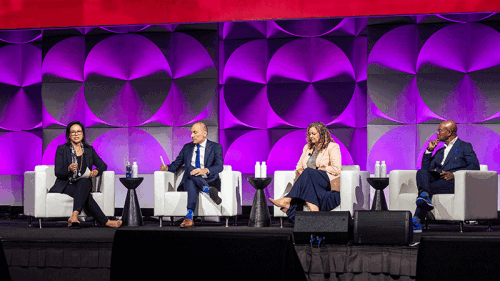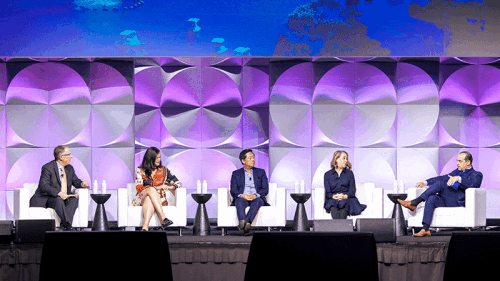Will the move to dismantle Fannie Mae and Freddie Mac mean the end of the 30-year fixed-rate mortgage as American homeowners have come to know and love it?
Most housing proponents claim it will. Without the government’s backing of a secondary mortgage market, they contend that the 30-year mortgage will become a relic of a soon-to-be-bygone era when mortgage money was cheap and easy to come by. But others say America’s most popular home loan will still be available—if borrowers can afford it.
Though the long-term fixed-rate mortgage was born with the Federal Housing Administration, the government agency established in 1934 to help stabilize the then-shaky housing market, it was taken to its greatest heights by Fannie and Freddie, the two government-chartered institutions that were created years later to keep money flowing for home loans.
The government-sponsored enterprises (GSEs) live and work in the secondary market, where they keep primary lenders flush with cash by purchasing their loans and packaging them into securities for sale to investors worldwide. With their implicit government guarantee and their corresponding ability to attract cash even though they were offering a lower return than investors could earn elsewhere, the GSEs were, in effect, able to subsidize the 30-year mortgage, making it less expensive than it otherwise would have been.
According to HSH Associates, a Maple Plains., New Jersey, mortgage information service, the current spread between loans that conform to Fannie’s and Freddie’s limit and those that are over it is 54 basis points. But the gap has been as wide as 180 basis points as recently as December 2008.
The long-term fixed-rate mortgage that meets the two GSEs’ rules also comes with an added bonus: a no-cost prepayment option. In the parlance of the stock market, this free “put” allows borrowers to trade them in at no cost for even less expensive loans when market rates fall, or otherwise pay them off without penalty.
Normally, investors shy away from purchasing loans with this feature—or demand higher yields—because there is no way of knowing when borrowers will pull the plug. But because Fannie and Freddie guarantee that investors will be paid even if borrowers fail to make their payments, the loans are considered so safe that they are worth the prepayment risk.
Because of these key features, the 30-year home loan purchased by the GSEs has been the backbone of the housing market. There are no hard figures, but Jay Brinkman, chief economist at the Mortgage Bankers Association (MBA), says “essentially almost all” long-term fixed-rate mortgages at or below the conforming loan limit end up at Fannie or Freddie because of their superior pricing.
Now, though, the Obama administration would gradually wind down Fannie and Freddie until they are mere figments of their former selves, if they survive at all. And with their demise, some housing interests also fear the passing of the 30-year fixed-rate loan.
Others don’t lament the passing of the either GSEs or the long-term fixed-rate mortgage. One particularly vociferous naysayer has been Edward Pinto, a former Fannie Mae executive who is now a resident fellow at the American Enterprise Institute (AEI), a conservative think tank. A long-time advocate for getting the government out of the mortgage business, he thinks it is simply bad public policy for Uncle Sam to be subsidizing home loans, especially since mortgage interest is already tax deductible.
Another expert who strongly favors a completely private housing finance market is David Jaffe, a University of California at Berkeley banking professor who follows the business closely and says there is “no longer a reason to delay reform.” Fifteen western European countries operate entirely without government support, and “their markets have performed remarkably well,” he says. “Much better than ours.”
Of course, in those countries—and most others—there is no such thing as a 30-year fixed-rate mortgage. And that’s not a bad thing, according to Pinto, who believes that the 30-year loan is a bad choice for most borrowers—for several reasons.
First and foremost, he says the ubiquitous mortgage is extremely expensive. Even at 5 percent, the total interest paid over the life of a $200,000 loan is $186,512—nearly as much as the mortgage itself. He also points out that it amortizes so slowly that borrowers build up little equity in the early years. Indeed, if the above mortgage was taken out today, it wouldn’t be until July 2027—more than 16 years from now—that more of the payment went to reducing the outstanding balance than to paying interest for the privilege of borrowing the money in the first place.
And because the 30-year loan is prepayable without penalty, Pinto says too many borrowers become serial refinancers, taking out whatever equity they manage to build up via not just making payments but because of price appreciation (when there is price appreciation). And as a result, they never accumulate much of a nest egg in their nest.
But the 30-year mortgage has its defenders, too, and they are starting to speak up. At a recent technology conference in Las Vegas, Fannie Mae’s chief economist, Doug Duncan, indicated that unless private entities step in to fill the void left when Fannie and Freddie bite the dust in five to seven years after the official wind-down begins, the loan will become a museum piece. Without the GSEs, he said, there won’t be securitization. And without securitization, there won’t be support for the 30-year mortgage.
The topic also came up a few days earlier during a panel session on mortgage liquidity at the National Association of Realtors’ Mid-Year Legislative Meetings in Washington, D.C. There, Rajinder Singh, chief risk officer for CitiMortgage, noted that U.S. homebuyers are “conditioned” to opt for the relative safety of a mortgage that offers the same payment, month after month, year after year. But without Fannie and Freddie, he said, the long-term, fixed-rate loan “wouldn’t exist.”
And at the MBA’s Annual Secondary Market Conference in New York, Ginnie Mae president Theodore Tozer said the naysayers haven’t been talking to the same foreign investors he has. “It’s interesting that we’re talking about phasing out the 30-year mortgage when other countries wish they had it,” said Tozer, whose independent agency has been instrumental in leveraging its government guarantee to keep funds from foreign investors flowing into the domestic housing market. “Other countries are envious of our 30-year mortgage.”
The Ginnie Mae president also said that considering the fragile nature of the current market, now is not the time to eliminate the 30-year loan from lenders’ mortgage menus. “This is the worst time to do it,” he said. “To shift risk to the consumer in today’s world would exacerbate delinquencies. In today’s interest-rate environment, things can only go up.”
Kevin Neylan, a senior vice president at the Federal Home Loan Bank of New York, agreed, saying that the future of the housing market would be “very uncertain” without the 30-year loan. Although “you could make a case that some borrowers would be better off” with a less expensive adjustable-rate product, he said, “most consumers seem to be risk averse.”
Neylan also said that while some of the smaller lenders served by the Federal Home Loan Bank system might opt to retain their fixed-rate products on their balance sheets, it wouldn’t be enough to support the demand.
If the 30-year fixed-rate mortgage doesn’t go away, if private enterprise opts to fill the securitization void left when Fannie and Freddie disappear, it will certainly be more expensive. How much more expensive is pure conjecture at this point. But some predict the rate could shoot up by three full percentage points.
The cost of a 30-year fixed-rate mortgage is currently hovering around 5 percent, so a three-point jump would boost the rate to 8 percent or so, driving the monthly principal and interest payment on a $200,000 mortgage from $1,074 to $1,468. That’s a difference of $394, a back-breaker for many would-be borrowers.
However, others say the increase in the rate won’t be nearly that much. And once the mortgage market calms down, the difference may not be much at all.
“Three might be a knee-jerk reaction,” says Keith Gumbinger of HSH, the New Jersey financial reporting company. “But over time, it will probably settle in at a point higher or a little more. It’s going to be a well-written mortgage anyway, so there won’t be that much credit risk” for investors.
Three percentage points sounds “way too high,” even to Brinkman of the MBA, which is pumping Capitol Hill for some sort of government guarantee on the safest, top-quality mortgages. Without that, the MBA argues, investors won’t buy American mortgages at any price.
But antagonist Pinto, the AEI gadfly who has been trying to poke holes in the GSEs for several years, says the 30-year fixed-rate mortgage without any prepayment penalty—the kind of loan for which most borrowers opt—would cost only one percentage point more than it does now. At 6 percent, the monthly payout on $200,000 loan would be $1,199 per month, or $125 more than the same loan at today’s going rate.


